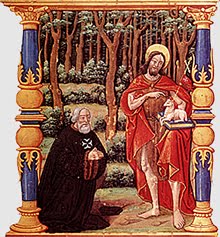The Sacred Liturgy in its widest meaning, has as its object, the religious and supernatural culture of Christianity in its various sacramentary, euchological, ritualistic, literary and artistic manifestations, embracing thus, as in a vast synthesis, all that which is most sublime which has been created in the world, in order to grasp and express the indescribable and the Divine. Nor is that all.
As children of the Catholic Church and heirs of the dogmatic revelation made to the ancient Patriarchs and Prophets of Israel, our religious culture not only pre-exists, in its fundamental elements, the very coming of the Son of God to the world, but it is present many centuries prior to the most ancient cultures which record history, establishing itself, for that reason, to be respected and venerated by the learned. Moreover, it is not possible to speak of a purely natural and human origin, both because the dogmatic element of Christianity originates from direct and positive Divine Revelation and also because the life and activity itself of the Church are derived from the Spirit of Jesus Who lives in Her.
Therefore we are speaking of a sacred poem, to which Heaven and earth have truly placed their hand, and in which humanity, redeemed in the Blood of the Spotless Lamb, on the wings of the spirit, soars on high, thrusting itself up to the throne of God. This is something more than a simple elevation; since the Sacred Liturgy does not only express that which is ineffable and Divine, but through the Sacraments and its euchological formulae, produces it, so to say, and fulfills it in the souls of the Faithful to whom it communicates the grace of Redemption. One may also say that the very source of the holiness of the Church is wholly comprised in Her Liturgy, so that without the Divine Sacraments, the Passion of the Saviour, in the present economy instituted by God, would not have any efficacy for us, due to the lack of instruments able to transmit its treasures to us.
The sphere of the Liturgy is unsurpassed by that of any other science, since it embraces the first origins of humanity, its essential relations with the Creator, the Redemption, the Sacraments, Grace, Christian eschatology, in other words, all that there is which is most sublime, most aesthetically perfect, most necessary and important to the world.
As for science, the Sacred Liturgy has its canons, its laws, its subdivisions, the same as all other sciences and particularly of positive theology, which is similar both in its method and its aim. One of its purposes, in fact, is the systematic study of Christian worship, distinguishing and classifying the various liturgical formulae according to the basic structure characteristic of each family, ordering them by date of compilation and instituting examinations and comparisons between the various forms, with a view to tracing elements of common origin in them.
It is only thus that apparently irreducible liturgies, such as the Roman, the Gallican and Hispanic liturgies can be traced to a common source. If such were not the case, it would be difficult to see how the unity of the Symbol of Faith (The Creed) failed to lead(as an immediate consequence of its unity) to primitive unity in its liturgical expression. Instead, recent studies and detailed and patient investigation have uncovered in all the liturgies, even the most dissimilar, a common substratum.
At times an identical concept is expressed using quite different ritual formulae and language. Nevertheless, it can now no longer be doubted that eastern and western liturgies all derive from an identical, very ancient form, which provides a foundation for Catholic unity in ecclesiastical worship.













No comments:
Post a Comment